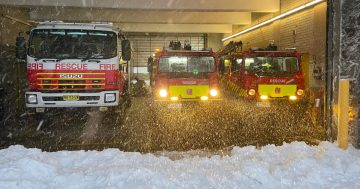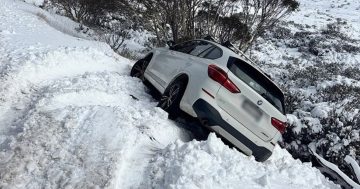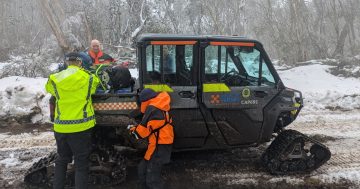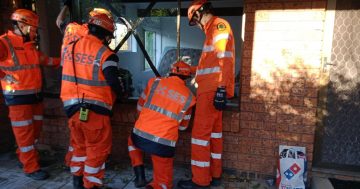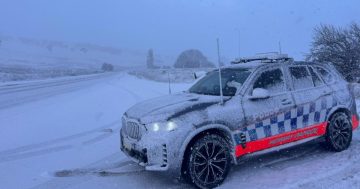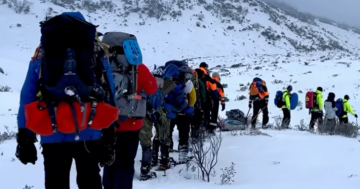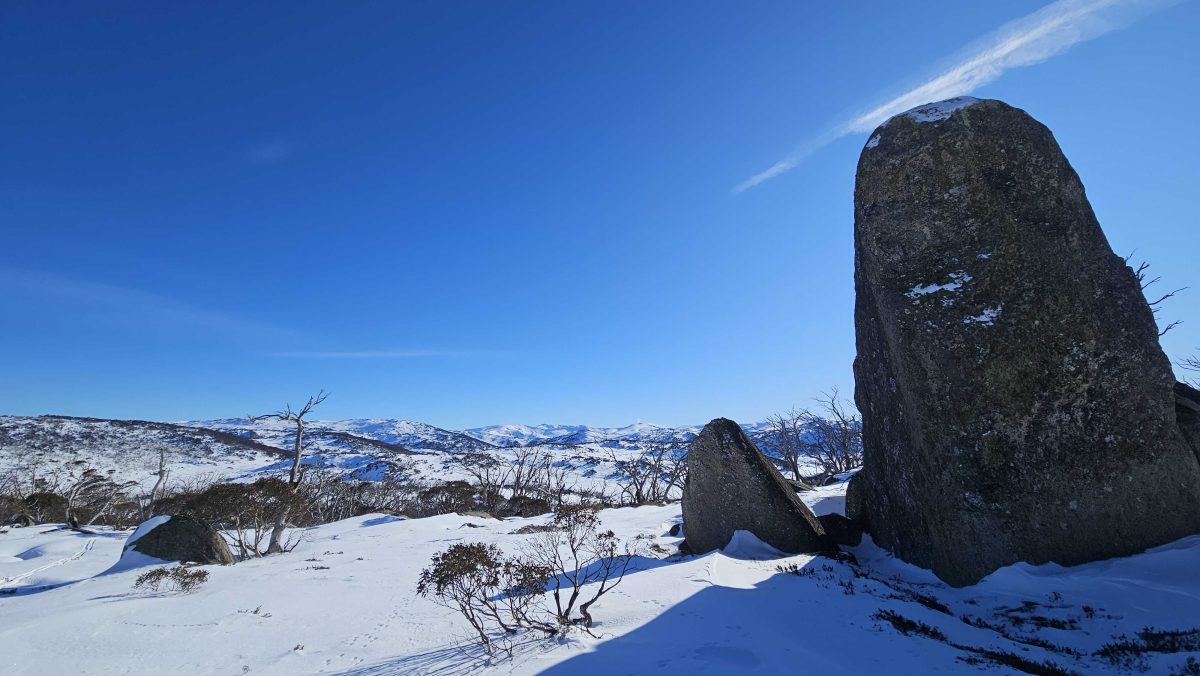
More than a dozen rescues have been recorded so far this season, compared to less than half that number in 2024. Photo: Nicholas Ward.
It’s been a great snow season for businesses and resorts, but with more people heading to the snow, there’s been a spike in people needing help.
Since the snow season started, the NSW State Emergency Service (NSW SES) and NSW Police have been kept busy responding to an average of two rescues per week (not including medical incidents).
In June, two bushwalkers were rescued from blizzard conditions on the Kosciuszko Walking Trail (below Mount Carruthers).
They weren’t alone, with a group of 11 hikers being rescued after one member of the group became unwell. A 20-year-old man was extricated on a specialist alpine sled, while a second person suffered a shoulder injury.
A little over two weeks later, a personal locator beacon was key in helping emergency services rescue seven people near Dead Horse Gap Track, southwest of Thredbo.
A 22-year-old man also died earlier this month in a snowboarding accident at Perisher Ski Resort.
For NSW SES Deputy Zone Commander Superintendent Matt Price, it’s a reminder of how quickly conditions in alpine areas can change and turn dangerous.
“Facing one of our most active snow seasons in years, our NSW SES alpine volunteers have shown exceptional skill and resilience in some very challenging conditions during rescues this year,” he said.
“This volume of rescues underlines the need for constant adaptability and readiness.”
He also said being prepared was key to helping people avoid dangerous situations.
“While emergency services are ready to respond, the community should know their risk and be prepared before heading out on the slopes.
“We urge visitors and locals alike to check weather forecasts, carry the right gear, and let someone know their plans before heading into the alpine area.”
The NSW SES has assisted NSW Police in 14 search and rescue jobs so far this snow season.
Four rescues were at Thredbo, three at Charlotte Pass, one at Perisher Valley, and others throughout Kosciuszko National Park, Jindabyne and Khancoban.
In comparison, there were just four call-outs across the 2024 snow season.
NSW Ambulance associate director of clinical operations for the southern sector Chief Superintendent Mark Gibbs said paramedics were also keeping an eye on people.
But it’s been busy for them, as well.
“It’s been one of the busiest starts to the season; already we’re up more than 90 incidents both within the resort and backcountry compared to previous seasons,” he said.
“NSW Ambulance responds to an average of 200 incidents on the snow each winter.”
The Alpine Operations team work out of Perisher Ambulance Station from the June long weekend until the October long weekend, and are also based in Jindabyne Ambulance Station year-round.
Four new state-of-the-art snowmobiles have recently joined NSW Ambulance’s Alpine operations fleet to replace four older models.
These vehicles will be used alongside the Kassbohrer (a large tracked snowcat used to travel over difficult snow terrain), The Hagglund vehicle (on lease from the Australian National Antarctic Research Expeditions), and 4WD vehicles.
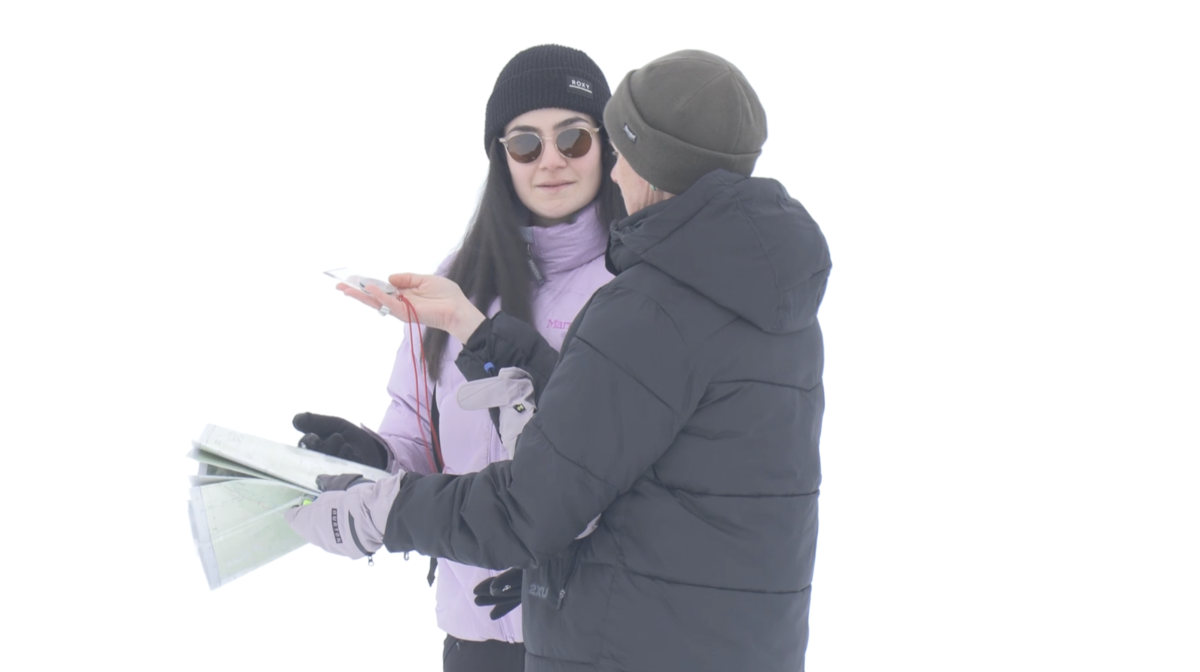
Experts are calling on people to be prepared and research safety measures before they hit the snow. Photo: NSW SES.
NSW Police Monaro Police District Commander Superintendent Toby Lindsay said being prepared could stop a fun day at the snow from turning into a tragedy.
“We are lucky to have experienced alpine operators across police and our emergency service agencies in and around the Snowy Mountains region,” he said.
“They are specialist officers trained to tackle the toughest alpine conditions, however we are continuing to see people putting themselves and emergency services at risk, due to a lack of planning,” he said.
“There is no such thing as being too prepared.”
People can take measures such as telling people about their trip, filling out a National Parks and Wildlife Services Trip Intention Form and hiring a personal locator beacon for free from National Parks and Wildlife Service visitor centres.
Experts have also previously told Region that strategies such as checking the forecast, making sure you have proper equipment and being willing to ask for help will help people return home safely.







